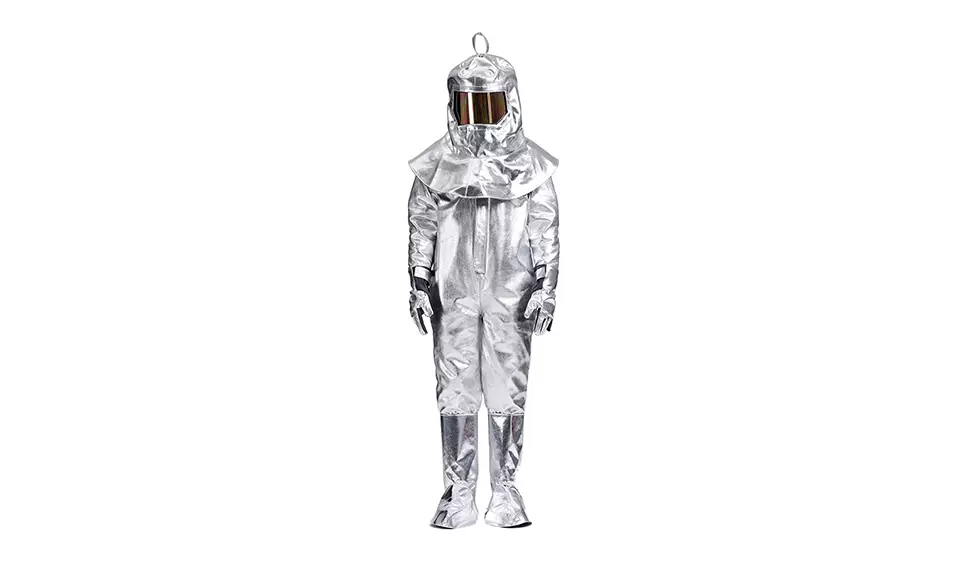
Precautions for wearing thermal insulation clothing
As an important personal protective equipment, thermal insulation clothing is widely used in high-temperature working environments, such as firefighting, metallurgy, glass manufacturing, petrochemical and other industries. It can effectively block high temperature heat and protect workers from high temperature burns and scalds. However, wearing thermal insulation clothing is not a simple matter. The correct wearing method and precautions are essential to ensure its protective effect and work safety. The following are some precautions for wearing thermal insulation clothing:
1. Choose the right thermal insulation clothingUnderstand the working environment: Before choosing thermal insulation clothing, you must first understand the temperature of the working environment, the intensity of radiant heat, and the possible presence of chemicals, so as to choose the appropriate type and grade of thermal insulation clothing.
Suitable size: Thermal insulation clothing should be selected in the right size to ensure that it is neither too tight to affect activities after wearing, nor too loose to cause heat penetration or protection failure.
Check quality: When purchasing, check the sewing process, fabric quality, and whether there is damage or aging of the thermal insulation clothing to ensure that the protective performance is intact.
2. Preparation before wearingPersonal hygiene: Before wearing, you should ensure that your body is clean to avoid oil stains, sweat, etc. that reduce the protective effect of thermal insulation clothing.
Check accessories: Check whether the zippers, buttons, reflective strips and other accessories of the thermal insulation suit are intact to ensure that they will not fall off or be damaged during wearing.
Avoid sharp objects: Before wearing, sharp objects in the working area should be cleared to prevent the thermal insulation suit from being scratched during wearing.
3. Correct wearing stepsWearing order: Wear inner clothes (such as fireproof underwear) first, then wear thermal insulation clothes, and finally wear outer protective equipment (such as fireproof clothes, helmets, gloves, boots).
Zipper and fasten: Make sure the zipper of the thermal insulation suit is fully zipped up, and fasten all buttons and buckles, especially cuffs, collars and trouser legs, to prevent heat from invading through the gaps.
Check the sealing: After wearing, check the sealing between the thermal insulation suit and the body to ensure that there are no gaps, especially at the neck, wrists and ankles.
4. Precautions during wearingAvoid long-term exposure: Although the thermal insulation suit has good thermal insulation properties, long-term exposure to extremely high temperatures may still reduce its protective effect. The working time and rest time should be arranged reasonably.
Pay attention to respiratory protection: In an environment with high temperature and possible presence of toxic gases or smoke, it is also necessary to wear appropriate respiratory protection equipment, such as a gas mask or air respirator.
Keep communication unobstructed: During operation, communication equipment should be ensured to be unobstructed so that timely help can be called in an emergency.
5. Handling after wearingTimely removal: After the operation, the thermal insulation clothing should be removed immediately in a safe area to avoid physical discomfort caused by long-term wearing.
Cleaning and maintenance: According to the manufacturer's cleaning guide, wash the thermal insulation clothing regularly to remove stains and sweat odors, and check for wear or damage, and repair or replace it in time.
Storage environment: Thermal insulation clothing should be stored in a dry, ventilated place without direct sunlight to avoid high temperature, humidity and chemical corrosion.
In short, the correct wearing of thermal insulation clothing is not only related to the life safety of the operator, but also an important measure to improve work efficiency and reduce the risk of accidents. By strictly following the above precautions, the protective effect of thermal insulation clothing can be maximized to ensure the health and safety of high temperature workers.












